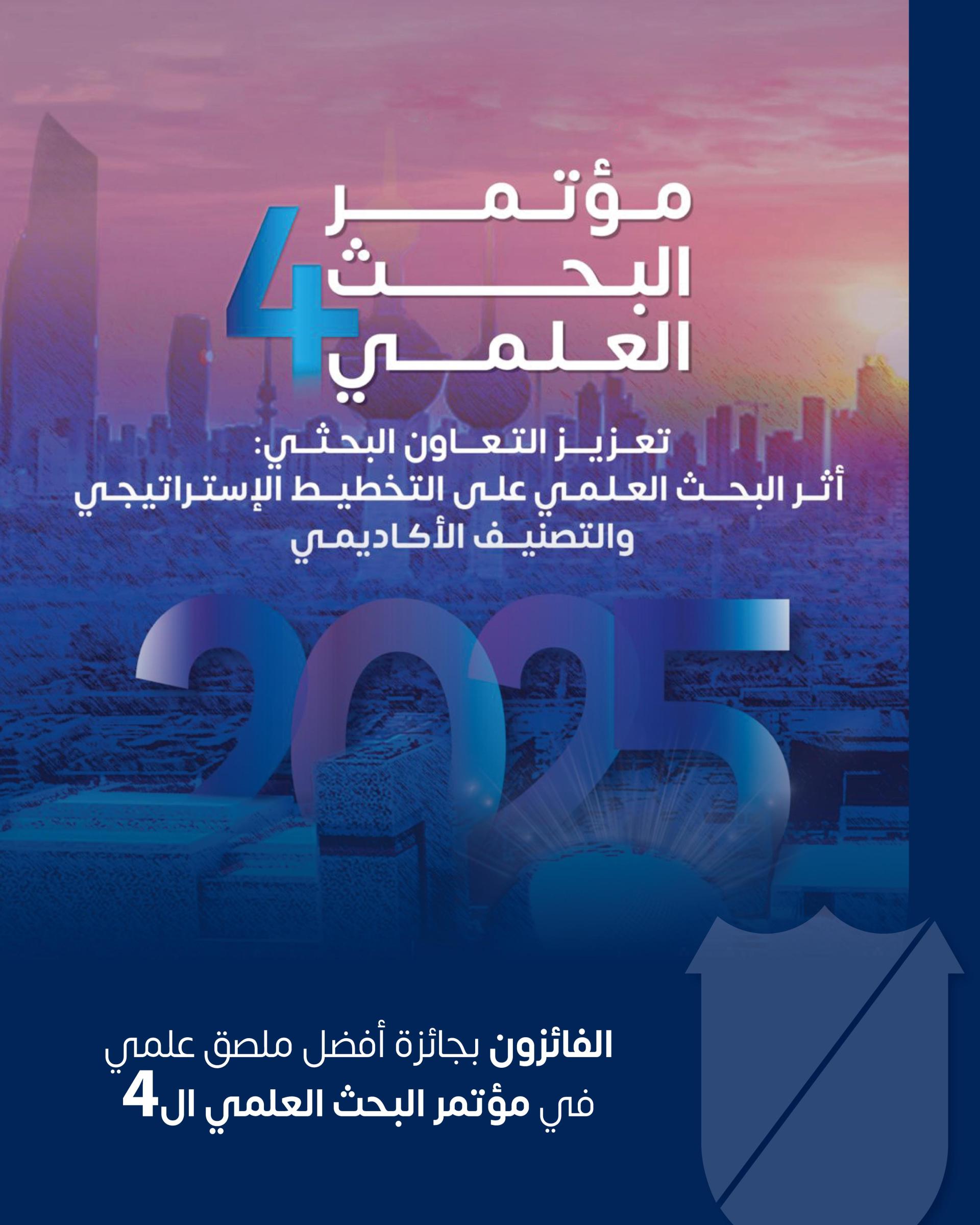
Winners from the Scientific Colleges – Category of Faculty Members
First Place:
Dr. Amani Mostafa Al-Adsani – College of Science
Title: Activation of Insulin Signaling and Secretion Pathways Using Garlic Extract Attenuate Symptoms of Diabetes In STZ-Induced Diabetic Rats
(Abstract: : Insulin signaling absence is a main hallmark of diabetes, as is a requirement for the 1) maintenance of glucose homeostasis and is also 2) involved in the regulation of pancreatic ?-cell mass and function. Certain natural extracts have been found to enhance diabetic symptoms such as garlic. In our study, the mechanism by which garlic ameliorates diabetic hyperglycemia was investigated in STZ-induced diabetic rats using microarray and qRT-PCR. STZ-induced diabetic rats were treated with garlic for 8 weeks, then the total pancreatic RNA was extracted and analyzed using GeneChip array. The analysis of microarray data using TAC and IPA softwares revealed the differential expression of genes that are part of the insulin signaling and secretion pathways including Ins1, Ins2, and Snap25, which were all upregulated after 8 weeks of garlic administration compared to the untreated diabetic group. qRT-PCR results showed similar expression pattern for the same genes, verifying the microarray results. Altogether, our results indicate that garlic may activate insulin secretion pathway by upregulating the expression of its corresponding genes, which participates in the induction of pancreatic?-cell proliferation and expansion to eventually produce an effective insulin dose to overcome the diabetic condition.)
Second Place:
Dr. Nasma Bastaki – College of Science
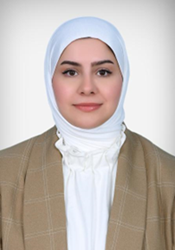
Title: Garlic Extract Protects the Retina from Degeneration in Diabetic Retinopathy Rat Model
(Abstract: : Diabetic retinopathy (DR) is a severe complication of diabetes mellitus (DM). Despite numerous studies exploring the anti-diabetic properties of garlic in managing DM symptoms, its impact on DR remains limited. This study aimed to test the effectiveness of garlic in managing DR in a streptozotocin-induced DR rat model. Rats were divided into three groups: normal control (NC), diabetic control (DC), and diabetic group (DG) treated with aqueous garlic extract (GE). Histological examination revealed a significant reduction in retinal thickness in DC rats compared to that in DG rats, which showed restored retinal thickness similar to the NC group. Immunohistochemical analyses revealed significant improvements in retinal vascular density, main artery diameter, and blood vessel numbers in DG rats compared to DC rats. The findings suggest that GE protects against DR. Furthermore, garlic could be recommended as a beneficial dietary supplement for diabetic patients to manage and delay the progression of DR.)
Third Place:
Dr. Fatima Al-Awadi – College of Pharmacy

Title: The Discovery of Moorenaside, a New Anti-Inflammatory Analogue of Aurisides from the Floridian Marine Cyanobacterium Moorena sp.
(Abstract: : A new 14-membered ring brominated macrolide glycoside (1) was discovered from a marine cyanobacterial sample collected from Shands Key in Florida. The gross structure of moorenaside (1) was elucidated using a combination of 1D and 2D NMR spectroscopy and mass spectrometry, while the stereochemistry was deduced from coupling constants and NOE correlations. The characteristic structural feature of 1, compared to other cyanobacterial macrolide glycosides, is an ?,?-unsaturated carbonyl system, also found in aurisides. The presence of this motif in 1 prompted us to evaluate its Keap1/Nrf2?ARE activity, a cytoprotective pathway involved in the activation of antioxidant genes. The compound exhibited moderate ARE luciferase activity at 32 µM. Due to the established crosstalk between Nrf2 and Nf-?B pathways, we investigated the anti-inflammatory effects of 1 in LPS-induced mouse macrophages (RAW264.7 cells), a commonly used model for inflammation. The compound significantly upregulated Nqo1 (Nrf2 target gene) and downregulated iNos (Nf-?B target gene) at 32 µM by 5.0- and 2.5-fold, respectively, resulting in a significant reduction of nitric oxide (NO) levels. Furthermore, we performed RNA-sequencing and demonstrated the transcriptional activity of 1 on a global level and identified canonical pathways and upstream regulators involved in inflammation, immune response, and certain oxidative stress-underlying diseases such as multiple sclerosis and chronic kidney disease.)
Winners from the Scientific Colleges – Category of Academic Support Staff
First Place:
Taibah Al-Burjas – College of Science

Title: Effects of Chronic and Acute Heat Stress on the Cardiac Expression of Antioxidative and Anti-Inflammatory Genes in Chicks
(Absract: The increased temperatures in Kuwait during the summer is presenting a health hazard worth investigating. Heat stress can affect several biological pathways. This study aimed to compare the effects of chronic and acute heat stress on the oxidative status and inflammatory responses of chicks’ hearts. Chronic and acute heat stress were induced in chicks, RNA was extracted from heart tissues, and gene expression was analyzed. Our results emphasizes that heat stress induces oxidative stress and inflammation in the hearts of chicks, and this is evidenced by changes in the expression of NRF2 and CAT as antioxidant factors, NFkB and LITAF as anti-inflammatory factors. Our study also showed that the induction of anti-inflammatory and antioxidant genes was greater upon exposure to chronic heat stress than acute heat stress. These findings confirm that chickens generally tolerate chronic heat stress better than they do acute heat stress.)
Second Place:
Mohammad Al-Sayegh – Kuwait Institute for Scientific Research (KISR)

Title: Smart Alarm System Notification for Greenhouse Control System Using IoT
(Abstract: Monitoring and maintaining temperature, humidity, light intensity, and soil moisture in a greenhouse are the critical factors that ensure the ideal growing conditions for healthy crops growth. However, a sudden change in these parameters due to climate fluctuations can also impact the crops growth, especially in the farmers absence. This study presents an alarm system design and inhouse software solution that detects any environmental change that might occur while monitoring several greenhouses simultaneously with the use of Internet of Things (IoT) for greenhouse control system. The proposed design solution consists of a Raspberry Pi acting as a control system, server-side application for database administration, and an alarm monitoring system that notifies users for any environmental fluctuations outside the environmental threshold range specified by users.)
Third Place:
Tahani Awaad Al-Shammari – Kuwait Institute for Scientific Research (KISR)
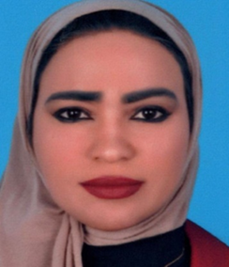
Title: Preparation of Activated Carbons From Date Palm Seeds Using Tubular Furnace
(Abstract: : Activated carbons derived from date palm seeds are one of the low-cost materials that have the potential to be used in applications such as water treatment, air purification and related applications. Three major elements required for commercial water treatment materials are low cost and high porosity. Activated carbons were prepared from waste date seeds that are readily available in KUWAIT as agricultural waste. The impact of different preparation conditions, such as temperature on the final elemental composition was studied. The collected TGA results clearly showed that. The best thermal stability upon activation at 800 OC. The porous structure of the carbons was clearly seen in the scanning electron microscopy (SEM) images.)
Winners from the Scientific Colleges – Category of Postgraduate Students
First Place:
Waleed Khaled Al-Hussain – College of Science

Title: Triazole Derivatives: Synthesis, Characterization, In-silico Investigation, Anti-cancer, and Anti-microbial Activities
(Abstract: Triazole nucleus is an important heterocyclic compound and has a lot of pharmaceutical activities such as antimicrobial, anti-inflammatory, anti-analgesic, antiepileptic, antiviral, antineoplastic, antihypertensive, antimalarial, and anticancer. Extensive research efforts have been established to explore many triazole derivatives with better biological activities. Based on that, we successfully synthesized new 1,2,4-triazole derivatives and fully characterized them by mass spectroscopy, 1H NMR, 13C NMR, FTIR, measurements of particles' sizes and morphologies. Agent 4f structure was confirmed by x-ray single crystal. For better agent's delivery into the middle of cancer cells, the agents were encapsulated into nano-LDL particles, to benefit from the lipid metabolic pathway. The data showed the agents are in nano size and showed a size increase after encapsulation with LDL particles. The biological results revealed that 1,2,4- triazole derivatives have anticancer activity toward both breast (MDA468) and prostate (DU145) cancer cell lines. Biological evaluation and in-silico investigation results were parallel and showed that agent 4f was the most toxic triazole agent that possesses the activity toward both cell lines in the range of 1.23±0.18 µM and 1.20±0.78 µM, respectively before and after LDL encapsulation. While all other agents showed strong benefits from the LDL drug delivery strategy. In DU145, cancer cell death was through targeting both HER2 receptor and β-tubulin proteins, while in MDA468 the inhibition was through targeting only β-tubulin as proved by western blot. The in-silico results revealed that the eight agents targeting β-tubulin, specifically agent 4f has an outstanding score of -5.9 kcal/mol compared with doxorubicin (calc. -6.8 kcal/mol). Furthermore, the agents were tested against gram-positive, gram-negative bacterial, and fungal strains at 1 μg/ml. The results showed that agents 4g and 4h were proved to be antibacterial agent against candida albicans. Also, this result was supported by the docking computations that demonstrated competing binding scores for compound 4h and the co-crystallized 4C7 ligand with values of −5.5 and −5.3 kcal/mol, respectively. In sum, 1,2,4- triazole derivatives proved their potency as anticancer and antibacterial agents.)
Second Place:
Hannah Drobiyova – College of Medicine
Title: ADAM9 Genetic Variants and their Role in Modulating Enzyme Activity in Diabetes and Metabolic Traits
(Abstract: A Disintegrin and Metalloproteinase Domain 9 (ADAM9) is a zinc-dependent proteinase involved in various biological processes. However, its role in the pathophysiology of metabolic syndrome remains unclear, and studies exploring the association between ADAM9 polymorphisms and metabolic traits are limited. In this study, we investigated the potential link between ADAM9 variants and metabolic syndrome traits in a cohort of adult participants from Kuwait. Using a genome-wide association study (GWAS), followed by a replication study, we identified two ADAM9 variants - ADAM9-E76K (rs61753672) and ADAM9-P750L (rs144750648) - that were associated with various metabolic traits. The replication phase confirmed the association of ADAM9-P750L with HbA1c levels and revealed new associations with systolic blood pressure, waist-to-hip ratio, fasting blood glucose, triglycerides, and cholesterol levels. Functional analysis showed that both variants exhibited reduced proteolytic activity, potentially contributing to the pathogenesis of type 2 diabetes. These findings suggest that ADAM9 variants may play a significant role in metabolic health and diabetes risk.)
Third Place:
Asmaa Mohammed Al-Saeedi – College of Engineering and Petroleum
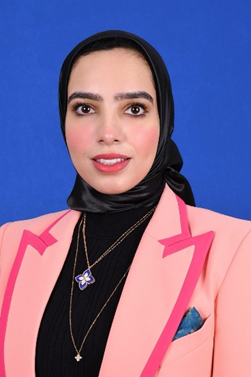
Title: An Experimental Study of Enhanced Oil Recovery in Wara Formation – Burgan Field
(Abstract: A significant amount of oil is trapped after primary and secondary oil recovery by waterflooding. This residual oil is the target for enhanced oil recovery. Recently, Kuwait Oil Company has initiated enhanced oil recovery studies in fields where primary mechanisms or secondary recovery techniques cannot maintain pressure. This work describes experimental studies of chemical enhanced oil recovery experimental studies conducted on four actual core samples from the Wara formation, particularly in the Burgan field, to support Kuwait's 2040 vision of increasing oil production capacity to 4.75 million barrels per day. The core samples comprised of two with high permeability and two with low permeability, collected from the same well but at depths differing by approximately 100 feet and one ideal core. The locations of these cores span between the middle (WM1-WM3) and lower (WL) sections of Wara. The Wara reservoir has been ongoing since 2014 to maintain pressure and improve oil recovery from the flank areas. The surfactant and polymer used in this study have been screened and evaluated to make sure that is compatible with formation water, oil, and reservoir rock. A total of five experiments were conducted: initially, water flooding followed by surfactant- polymer (SP) or polymer flooding (P), repeated for both high and low permeable cores. The results of our experimental investigation showed that water flooding achieved almost 60% of the initial oil in place. An additional 30% of oil was recovered by surfactant polymer flooding for both high and low permeable cores. Furthermore, polymer flooding alone led to varying additional recoveries of 40% for the low permeability core and 10% for the high permeability core. These findings contribute to the existing literature on the understanding of rock lithology, characteristics of surfactant and polymer and their effectiveness in oil recovery processes in the Wara Formation of the Burgan Field.)
Winners from the Humanities Colleges – Faculty Category
First Place:
Dr. Yousef Jassim Abdulsalam – College of Business Administration

Title: Hospital Merger & Acquisitions: To What Extent Do M&As Bend Costs?
(Abstract: The purpose of this study is to increase understanding of the impact of mergers & acquisition activity on hospital performance and supply chains. We test whether economies of scale in supply chain operations are truly achieved after merger activities and ask how long it takes for changes to reflect on financial metrics: operating, supply, and pharmaceutical expenses.
Through regression analysis on a data sample from 3,000 hospitals and about 250 merger events, we find that while there are efficiencies in operating expenses, the bulk of savings comes from payroll reductions rather than supply chain management efficiencies.)
Second Place:
Dr. Ahmed Ibrahim Al-Ansari – Public Authority for Applied Education and Training
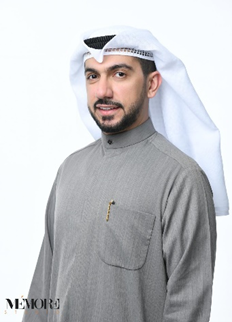
Title: Designing a Cardiac Intensive Care Unit by Employing an Evidence-Based Design Approach
(Abstract: This study aimed to develop a set of key evidence-based design considerations for a prototype (3-Dimensional) CICU that promotes patient health and safety, as well as staff work efficiency. To provide convergent evidence about the association between cardiac intensive care and the physical environment, searches were conducted in the PubMed, Google Scholar, and other databases, as well as in certain specialized journals. The inclusion criteria included: qualitative, quantitative and mixed-methods studies and systematic reviews; written in English; related to the built environmental design of cardiac intensive care. The contents of the selected articles were first extracted and then analyzed and synthesized. The results of this review demonstrated that the physical design had a strong influence on patient health and safety. A total of more than 40 CICU design recommendations were identified. In practice, all environmental and non-environmental factors should be holistically considered in the design decision-making process. The next step is the development and testing of prototypes that incorporate relevant design strategies before wide application. This literature review disclosed the key design strategies that enhance the physical design of the cardiac intensive care units. Further research is needed to evaluate the prototype and to investigate the future needs and issues of designing CICU.)
Third Place:
Dr. Maitham Abdulrahim – College of Business Administration

Title: Oil Prices and Public Expenditures Allocation in Kuwait: Understanding the Dynamics
(Abstract: This study examines the dynamics of Kuwait's government resource allocation in response to global real oil price shocks, utilizing a Bayesian Structural Vector Autoregressive model. Analyzing quarterly time series data from 1993Q3 to 2015Q4, the findings reveal that real oil price shocks significantly influence Kuwait's real current and capital public expenditures. Evidence indicates that real capital expenditures are significantly more sensitive to oil price fluctuations than current expenditures. While oil price shocks play a key role in explaining public expenditure variations, the influence of non-oil-related shocks has grown since 2006.)
Winners from the Humanities Colleges – Category of Academic Support Staff
First Place:
Amaal Ali Qasemi – College of Social Sciences
Title: Anxiety and Depression in Mothers of Children with Disabilities Compared to Mothers of Healthy Children
Abstract:
Objectives: This study aimed to identify the levels of anxiety and depression in mothers of children with physical disabilities compared to mothers of children with intellectual disabilities, as well as to compare both groups with mothers of healthy children.
Methodology: The researcher used a descriptive comparative method with 102 Kuwaiti mothers, divided into three groups: 40 mothers of physically disabled children, 32 of intellectually disabled children, and 30 of healthy children, with children's ages ranging from 15 to 25 years, and varying degrees of disability severity (mild to severe). Data was collected using the Kuwait University Anxiety Scale and the Beck Depression Inventory-II.
Results: Statistical analysis indicated higher anxiety levels in mothers of physically disabled children compared to mothers of healthy children, while no statistically significant differences were found in depression levels among the three groups. However, mothers of intellectually disabled children with education levels below secondary showed higher depression than those with higher education.
Conclusion: The type of disability appears to be a key determinant of anxiety levels in mothers, while educational level is a predictor of depression. The study recommends paying attention to the psychological wellbeing of mothers of children with disabilities to better enable them in caregiving roles, which in turn may reduce their anxiety and depression levels.
Second Place:
Anoud Yousef Al-Abdulwahed – College of Law

Title: Criminal Confrontation of Environmental Crimes in Kuwaiti Law – A Comparative Study
Abstract:
A comparative study of environmental crimes in Kuwaiti environmental law, Egyptian environmental law, and the environmental laws of some Gulf Cooperation Council (GCC) countries.
Third Place:
Muneera Abdulkarim Al-Ajlan – College of Arts

Title: Language as Leverage: Trump’s Rhetorical Playbook for the 2024 Campaign
(Abstract: This pilot study explores the rhetorical strategies employed by Donald Trump in his 2024 U.S. presidential campaign, examining how his language serves as a persuasive tool to mobilize support and shape public perception. Using a corpus of expressions gathered from media coverage, televised debates, and Trump’s Twitter posts, the analysis identifies key themes, framing techniques, and linguistic patterns that characterize his discourse. The study reveals that Trump`s language relies heavily on emotionally charged terms, repetitive slogans, and polarizing narratives designed to evoke strong responses among his audience. By constructing an "us vs. them" dynamic, Trump positions himself as a defender of American values while portraying opponents and outsiders as threats. Through methods such as keyword frequency analysis, sentiment analysis, and thematic coding, this paper highlights the central role of language in reinforcing political ideologies and influencing voter behavior. Preliminary findings indicate that Trump’s rhetorical approach combines populist appeals, appeals to authority, and intentional ambiguity to build resonance with key voter demographics. This research provides insight into the power of language as a tool for political influence, offering a nuanced understanding of Trump’s rhetorical playbook and its potential impact on the 2024 election.)
Winners from the Humanities Colleges – Category of Postgraduate Students
First Place:
Maram Owaid Al-Mutairi – College of Business Administration
Title: Assessing the Economic Impacts of Renewable Energy Adoption: Comparative Case Studies of the United Arab Emirates
(Abstract: This study examines the economic effects of renewable energy adoption in the United Arab Emirates (UAE) using an Autoregressive Distributed Lag (ARDL) model on data spanning from 2010 to 2020. The analysis focuses on the impact of renewable energy consumption on GDP growth, capital formation, employment, and trade openness. The results show a significant positive effect of renewable energy consumption on GDP per capita in UAE. Capital formation and employment also have remarkable positive impacts on GDP per capita too. The results indicate that investments in renewable energy are not only important for environmental sustainability but also for stimulating economic development, job creation, and capital investment. The research underscores the role of supportive policy frameworks in maximizing the economic gains of renewable energy uptake.)
Second Place:
Laila Farraaj Al-Shammari – College of Social Sciences
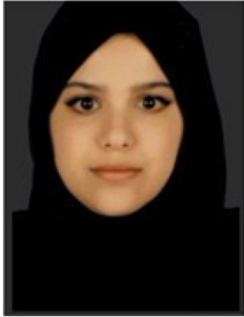
Title: Intercomparison of Image Classification Methods and Machine Learning Techniques at Different Spatial Resolutions
(Abstract: This study evaluates the performance of three classification algorithms—Maximum Likelihood (ML), Support Vector Machine (SVM), and Random Forest (RF)—in land-use and land-cover (LULC) mapping using various remotely sensed data, including Landsat-8, Sentinel-2, PlanetScope, and UAV imagery. K-means clustering was first applied to identify land cover classes, followed by an object-based approach for training sample collection. The results showed that SVM consistently outperformed ML and RF, particularly with high-resolution UAV imagery, achieving a Kappa coefficient of 0.98 and an overall accuracy of 98%. SVM's robustness was evident in distinguishing subtle spectral and spatial differences, while ML exhibited the lowest accuracy (67%) with Landsat-8. The study highlights the importance of selecting appropriate spatial resolutions and efficient algorithms to enhance classification accuracy, contributing to sustainable land cover monitoring and natural resource management.)
Third Place:
Anfal Salem Al-Anezi – College of Social Sciences
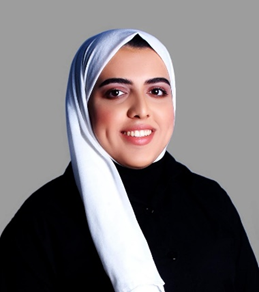
Title: Investigating the Influence of Rainfall Events in Kuwait Bay Transparency by Integrating Multiple Satellite Sensors
(Abstract: Sea water transparency is a crucial indicator of understanding the optical properties of aquatic systems. Secchi disk is a field tool that can be used to measure water transparency. Secchi depths are usually integrated with satellite data to estimate seawater transparency over large areas. This project investigated the spatial and temporal changes of Secchi Disk Depth (SDD) after heavy rainfall events over Kuwait Bay using multiple satellite data (Landsat-8, Landsat-9, and Sentinel-2B). Kuwait Bay was divided into eight zones based on several factors: outfall locations, natural drainage areas, organic sediment sources, and anthropogenic activities. Field measurements of SDD were collected and included in the statistical analysis to evaluate the performance of two SDD models. Spatial and temporal variations of SDD were detected after four heavy rainfall events. The comparison between pre-events and post-events indicates that the impacts of rainfall events varied between zones. The reduction in SDD in the northern part of Kuwait Bay is a result of natural sediment from Jal Al-Zoor edge. The surface runoff from the urban area increased SDD values in some parts of the southern zones and did not significantly contribute to increased sediment in these zones.)
Winners of the Best Scientific Poster Award Presented by the Kuwait Foundation for the Advancement of Sciences (KFAS)
Prof. Eisa Mohammed Al-Safran – College of Engineering and Petroleum (Field of Energy)

Title: Asphaltene Integrated Model (AIMTM) Simulator For Asphaltene Deposition Management in Kuwait Oil Fields
(Abstract: A state-of-the-art simulator predicts asphaltene precipitation and deposition in oil wells by integrating gas, water, and oil flow dynamics and thermodynamics. This model simulates asphaltene aggregation, precipitation, deposition, and transport over time and space, validated with field data from Kuwaiti oil wells. By integrating a reservoir sector model with a tubular flow model, it provides a physics-based, user-friendly tool for predicting asphaltene behavior across the production system.)
Dr. Sayyed Saad Bin Qassem – Faculty of Dentistry (Field of Health)

Title: Enhancing Craniofacial Bone Tissue Engineering Strategy: Integrating Rapid Wet Chemically Synthesized Bioactive Glass with Photopolymerized Resins
(Abstract: Background Craniofacial bone regeneration represents a dynamic area within tissue engineering and regenerative medicine. Central to this field, is the continual exploration of new methodologies for template fabrication, leveraging established bio ceramic materials, with the objective of restoring bone integrity and facilitating successful implant placements.
Methods Photopolymerized templates were prepared using three distinct bio ceramic materials, specifically a wet chemically synthesized bioactive glass and two commercially sourced hydroxyapatite variants. These templates underwent comprehensive characterization to assess their physicochemical and mechanical attributes, employing techniques including Fourier transform infrared spectroscopy, scanning electron microscopy, and nano-computed tomography. Evaluation of their biocompatibility was conducted through interaction with primary human osteoblasts (hOB) and subsequent examination using scanning electron microscopy.
Results The results demonstrated that composite showed intramolecular hydrogen bonding interactions with the photopolymer, while computerized tomography unveiled the porous morphology and distribution within the templates. A relatively higher porosity percentage (31.55 ± 8.70%) and compressive strength (1.53 ± 0.11 MPa) was noted for bioactive glass templates. Human osteoblast cultured on bioactive glass showed higher viability compared to other specimens. Scanning micrographs of human osteoblast on templated showed cellular adhesion and the presence of filopodia and lamellipodia.
Conclusion In summary these templates have the potential to be used for alveolar bone regeneration in critical size defect. Photopolymerization of bioceramics may be an interesting technique for scaffolds fabrication for bone tissue engineering application but needs more optimization to overcome existing issues like the ideal ratio of the photopolymer to bioceramics.)
Alaa Nasser Al-Foudari – College of Engineering and Petroleum (Field of Environment)
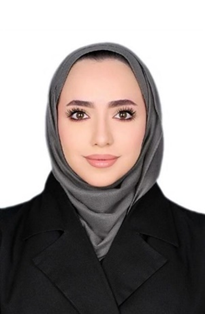
Title: Experimental Analysis of Saline Water Desalination Using Directional Extraction Methods with Octanoic Acid
(Abstract: This study experimentally investigated the thermodynamic properties of Octanoic Acid C_8 H_16 O_2 which forms a liquid-liquid immiscible binary mixture when mixed with water. Octanoic Acid is used as a directional solvent in the Directional Solvent Extraction (DSE) process which is a promising alternative technology to the traditional water desalination process using low-temperature heat sources. These thermodynamic properties, such as density, viscosity, and solubility, are considered a dominant factor in modeling and optimizing DSE desalination systems. Both solubility of Octanoic Acid in brine water and solubility of pure water in Octanoic Acid were studied by designing and applying an accurate methodology. These properties are crucial for the energy and exergy analyses used to design and evaluate the DSE system performance.)
Mohammed Rashad Abd Al-Nadheer – College of Science (Field of Food and Water Security)
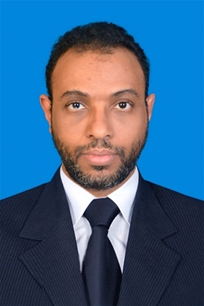
Title: Siloxane-Free Silicon-Based Copolymer for In-Tube Solid-Phase Microextraction of PAHs from Water Samples: An Environmental Monitoring Approach
(Abstract: This study investigates an in-laboratory made copolymer designed to mimic the advantageous properties of widely known two polymers: polydimethylsiloxane (PDMS) and polyethylene glycol (PEG), while overcoming their inherented limitations. The
developed copolymer comprised of siloxane-free silicon-based backbone, synthesized from ethylene glycol and bis(chloromethyl)dimethylsilane as monomers. The resulted copolymer (PEGDMS) was thoroughly characterized using gel permeation
chromatography (GPC), nuclear magnetic resonance (NMR), Fourier-transform infrared spectroscopy (FT-IR), thermogravimetric analysis (TGA), and differential scanning calorimetry (DSC). Films based on PEGDMS/TEOS and PEGDMS/Sylgard-184
were then prepared and compared with commercial polymers for several physiochemical properties. These films were further characterized using FT-IR, TGA, DSC, and x-ray photoelectron spectroscopy (XPS). PEGDMS copolymer was also used as a
microextraction sorbent for in-tube solid-phase microextraction (IT-SPME) for preconcentration of polycyclic aromatic hydrocarbons (PAHs) before quantification using high-performance liquid chromatography with photodiode array detection (HPLCPDA).
Four PAHs probes were utilized as model analytes to optimize the IT-SPME process. Analytical parameters for microextraction performance such as desorption solvent, desorption time, salt concentration, and sample volume were systematically
examined, leading to the establishment of an efficient IT-SPME method. This method demonstrates low limits of detection (0.95–1.82 ngmL-1), low limits of quantification (3.2–6 ngmL-1), a reasonable linear range (0.1–100 mgL-1), and high correlation
coefficients (0.995–0.999). Additionally, the relative standard deviations were consistently below 10% (n = 5).)


 Colored
Colored Grayscale
Grayscale


